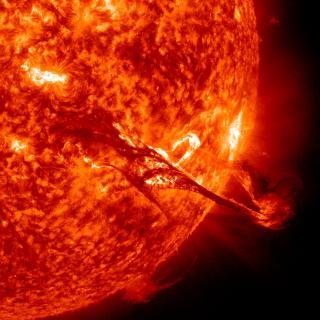|
Sunspots are the most evident manifestations of solar magnetism, and oscillations are a fundamental physical process taking place in them. Despite the efforts over the last 50 years, a global picture about sunspot oscillations remains elusive. This project aims to perform a thorough analysis of sunspot waves, from the solar interior to the chromosphere. This goal will be addressed from a multidisciplinary approach, combining forward modeling, local helioseismology, ground- and space-based observations, plasma diagnostic methods, and machine learning. 1) the direct effect of the magnetic field is neglected; 2) sunspots are considered as weak perturbations; 3) flows and sound speed changes are the only factors that generate the observed effects. Neither of these assumptions holds for sunspots. Nowadays, there is a strong consensus that travel-time inversions do not reveal the true subsurface structure of sunspots. We propose to develop a new technique that can bypass the limitations of current inversion methods. A neural network will be trained with the results of a large set of numerical simulations. It will associate the travel-time measurements with the properties of the sunspot interior. The main advantage of this approach is that it uses the solution of the full magnetohydrodynamics equations and, thus, it takes into account all the relevant physical processes. Our research team and working group have a broad experience in the study of waves in the internal layers of the Sun and the atmosphere. In this project we aim to link these two lines of research and perform a comprehensive study of the global process of wave propagation in sunspots. This goal will be accomplished by fostering the interaction of local helioseismic analyses, forward modeling, and spectropolarimetry. |



